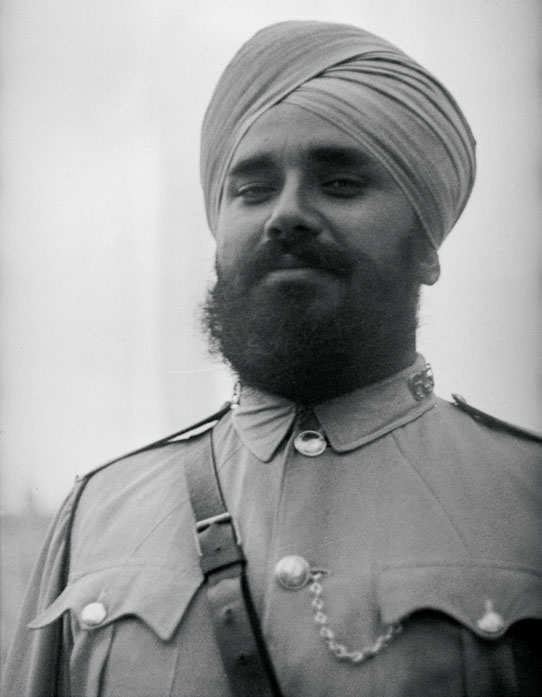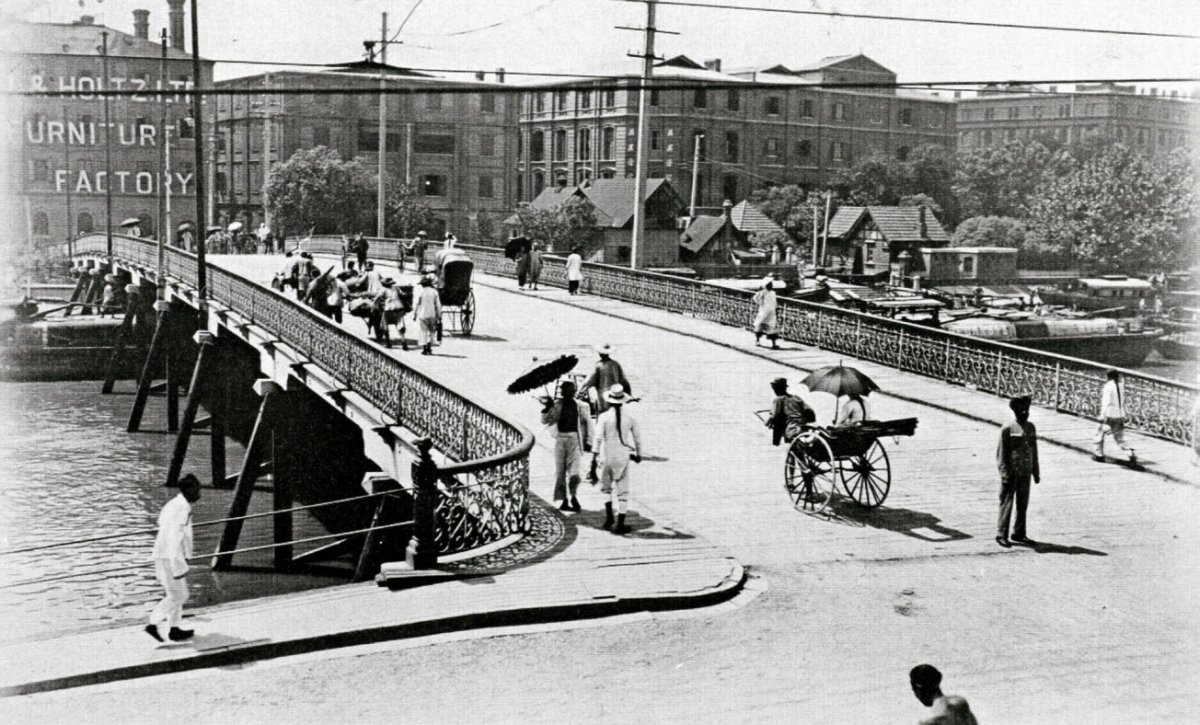The murder of Buddha Singh and the rise of British trans-regional surveillance
In January 1924, copies of the newspaper Hindu Jagawa were seized by the Shanghai Municipal Police (S.M.P.) at the headquarters of the Hindustan Association in Rue du Consulat, in the French Concession of Shanghai. The editor of this newspaper, Harbaksh Singh – viewed as the ringleader of the Indian nationalist movement in Shanghai – was then charged with publishing ‘seditious’ papers that would result in a breach of public peace. The evidence of this charge lay in an article, entitled, “One who seeks the blood of his brethren for his own personal benefit”. The article blamed a Jemadar [Inspector] of the Sikh branch of the S.M.P., Buddha Singh, for using the Gurdwara’s [Sikh place of worship] money to buy gifts for his British officers in order to flatter them. It alleged, “outwardly [Buddha Singh] seems to love his people, but inwardly, he is against them and on the side of the government”. Why was Buddha Singh regarded as a traitor by the nationalists? And in what way does Buddha Singh’s personal story shed light on the Indian nationalist struggle as well as the Chinese political landscape of the 1920s?
Buddha Singh was born in the Majha region of the Punjab in the 1870s. He came to Shanghai and joined the S.M.P. as a constable in February 1902. According to the Terms of Service for the Indian Branch of the S.M.P., a constable had to serve for at least five years before he could be promoted to the rank of Havildar [Sergeant] and it was nearly impossible for a common constable to obtain the position of Jemadar, the highest rank for any Sikh serving in the S.M.P.. Buddha Singh, however, did not want to bow to this fate. Apart from completing his own work in an exemplary way, he also performed as the treasurer of the local Sikh community and was actively involved in organizing religious festivals, such as the Singh Sabha Celebration, which gained him considerable respect among his countrymen. The S.M.P. felt Buddha Singh’s rising influence and was all too ready to utilize him for its own ends. In February 1906, Buddha Singh was made Havildar by the S.M.P.; he became the secretary of the Sikh community in Shanghai two years later, and in 1911 he was promoted to Jemadar of the S.M.P..
When World War I broke out, Buddha Singh felt the expediency to check anti-British elements. In July 1914, he began to investigate the circulation of the ‘seditious’ Ghadar newspaper in Shanghai and found out that they were distributed by seven Ghadar Party members, who were also responsible for recruiting local Sikhs and transporting them to India. Buddha Singh forwarded the details of these men to the S.M.P., adding that those involved should be arrested. Alerted to a possible British crackdown, Ghadarities burned all copies of the newspaper and fled from Shanghai.
To counter the propaganda of the Ghadar Party, Buddha Singh took measures to reinforce Sikh loyalty to the British Empire in Shanghai. On 21 November 1915, he presided over the anniversary of the birthday of Guru Nanak Singh in the North Sichuan Road Gurdwara, in which a resolution was passed that called on all Sikhs in Shanghai to express their loyalty to the British Raj and to devote their energy and means to assist the British government in the war. To strengthen patriotism and to nurture the sense of obedience amongst young Sikhs, Buddha Singh helped to set up the Shanghai Sikh Scout Troop in August 1917. Additionally, he initiated a movement to exhort Sikhs in Shanghai to donate money to the Red Cross in India for the benefit of wounded Sikh soldiers who were loyal to and had fought for the British Empire during the War.
Buddha Singh’s work outweighed the efforts of the Ghadar Party in Shanghai. During the War, not a single case of insubordination was reported and the discipline of the Sikh police unit was judged to be “excellent” by the Annual Report (1917) of the Shanghai Municipal Council. As a reward for his contribution, Buddha Singh was conferred the title of Sirdar Sahib, the most honorable title a Sikh had ever been offered in Shanghai. To glorify this achievement, all high-profile British officials in Shanghai attended the ceremony in the British Consulate. A procession, composed of mounted Sikh policemen, European policemen, and Sikh Boy Scouts, was held to greet the titleholder. The British Consul-General, Sir Everard Fraser, presented the insignia to Buddha Singh in person.
The honor, however, was merely one side of the coin. Buddha Singh’s influence and his stubborn attitude toward the Indian nationalists also brought him great troubles. On the morning of 15 July 1914, days after Buddha Singh forwarded the name list of seven ‘seditionists’ to the S.M.P., he was assaulted with a heavy stick by an ex-policeman, Lal Singh, an alleged Ghadar member who turned out to be a friend of those on the list. Ten days later, he was attacked again by three alleged Ghadarites who knocked him down and tried to blind him by fiercely attacking his eyes and head. Buddha Singh was so seriously injured that he was unconscious for several days.
Buddha Singh also faced repeated threats against his life. In June 1914, he received a letter from the Ghadar Party that threatened to kill him for his disloyalty to the Indian people. On 3 October 1923, when he was on a ship bound for Hong Kong, four Sikhs informed him that one day, someone would kill him and that the killer was willing to become a martyr for the cause. Buddha Singh understood that these threats were real and told his friends on numerous occasions that he would meet the fate of being assassinated by these revolutionaries; a prophecy that came true.
Indeed, to create disturbance among Sikh policemen in Shanghai and to support the Chinese nationalist revolution, the Ghadar Party harbored a plan to assassinate Buddha Singh. On the morning of 6 April 1927, a Gadhar Party member, Harbant Singh, shot Buddha Singh dead in front of the gate of the Central Police Station in the International Settlement of Shanghai.
The assassination of Buddha Singh appalled the British authorities; within two months of the assassination almost all important Ghadarites were put into custody. Furthermore, the British decided to improve the salaries and living conditions of the Sikhs in Shanghai. Ironically, this episode bears little significance to modern Chinese national history, or its scholars, yet when interpreted from a transnational approach it can shed light on how Indian nationalist movements, the Ghadar movement in particular, developed in Shanghai from the 1910s to the 1920s and how their anti-British conspiracies were intertwined with the international communist movement and the Chinese nationalist revolution. In effect, the Ghadar movement, and in particular their assassination of Buddha Singh, gave rise in the late 1920s and early 1930s to the formation of the British trans-regional surveillance network, to check the flow of Indian dissidents from North America to India through Southeast and East Asia.
Yin CAO曹寅 is a Research Fellow in the Department of History at Sun Yat-Sen University (cao_yin50@u.nus.edu).
For this article, the author made extensive use of the archive of the North China Herald. This text is a summary of the author’s 2016 article “Kill Buddha Singh: Indian Nationalist Movement in Shanghai, 1914–27”, Indian Historical Review 43(2): 270-288.


